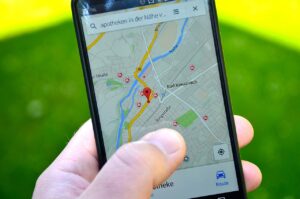Best Way to Locate a Lost Phone
Losing a phone can be a distressing experience. Whether it slips out of a pocket inadvertently or gets left behind at a café, the loss can feel overwhelming. Our phones are not just communication devices; they are repositories of personal data, treasured memories captured in photos, and important documents. In this article, I’ll guide you through the importance of tracking down a misplaced handset, the mechanics of phone locating services, and a detailed walkthrough on how to locate a lost phone. We’ll also cover some preventive measures to help you avoid such a situation and explore the top apps that can assist in the recovery of a lost device.
Why Locating a Lost Phone is Important
The significance of retrieving a lost phone transcends beyond the device’s monetary value. Smartphones today are akin to digital extensions of ourselves. We use them to manage our schedules, communicate with loved ones, and store sensitive information such as passwords and banking details. The thought of this personal data falling into the wrong hands is unsettling and poses risks of identity theft and privacy invasion.
Emotional and Practical Implications
Furthermore, we form attachments to our phones because of the memories they hold. Photos, videos, and messages represent experiences and relationships that cannot be replaced. On a practical level, the inconvenience of losing contacts, calendar events, and notes can disrupt both personal and professional life. It is evident that there’s much at stake, making the quest to locate a lost phone all the more imperative.
The Risk of Data Breach
In an era where data breaches are common, securing a misplaced phone is crucial. A lost phone that remains unsecured could potentially grant unauthorized users access to your social media accounts, financial applications, and other sensitive information. This could lead to fraudulent activities that might take years to rectify.
How Do Phone Locating Services Work?
The Technology Behind the Services
Phone locating services rely on a blend of technologies to pinpoint the position of a device. GPS (Global Positioning System), cell tower triangulation, and Wi-Fi positioning are the primary methods used. GPS provides location data through satellites, offering high accuracy when the device has a clear line of sight to the sky. Cell tower triangulation estimates a phone’s location based on the strength of its signal to nearby towers, while Wi-Fi positioning uses the proximity to registered Wi-Fi networks to determine the location.
The Role of Device Managers
Most smartphones come with a built-in device manager, like Apple’s “Find My iPhone” or Google’s “Find My Device.” These managers can remotely track, lock, or wipe your phone, provided it is turned on and connected to the internet. They also require the device to be linked to an account (Apple ID or Google account) with the locating service pre-activated.
Privacy Concerns and Permissions
To address privacy concerns, these services are designed with user consent at the forefront. Users must grant explicit permissions for these apps to access location data. This ensures that tracking capabilities cannot be exploited without the device owner’s knowledge.
Step-by-step Guide: How to Locate a Lost Phone
Immediate Actions to Take
If you find yourself in the unfortunate situation of having lost your phone, time is of the essence. First, try calling your phone. If it’s nearby, you might hear it ring or vibrate. If that doesn’t yield results, you should move on to utilizing a locator service.
Using a Locator Service
Most smartphones have a built-in locator service. For iPhones, this is “Find My iPhone,” and for Android devices, it’s “Find My Device.” Access these services through another device or a computer. Log in with the credentials associated with the lost phone. You should then see a map indicating your phone’s location.
Locking and Protecting Your Data
Once you’ve located your phone on the map, you can send a message to the device, lock it, or in extreme cases, erase the data remotely. Locking the phone can prevent unauthorized access while you attempt to recover it. This is an essential step in protecting your privacy.
Precautions to Take to Avoid Losing Your Phone
Adopting Good Habits
Prevention is better than cure. Form the habit of keeping your phone in the same place, such as a designated pocket or compartment in your bag, so you always know where to find it. Always check your surroundings before leaving a place to ensure you haven’t left your phone behind.
Investing in Protective Accessories
Consider investing in a phone case with a strap or a phone lanyard to keep your phone attached to you. Some cases are designed to be more noticeable, with bright colors or patterns that make your phone stand out, making it easier to spot.
Utilizing Technology
Enable the locator service on your phone as a precaution. This way, if your phone does go missing, you’re already set up to track it down. It is also wise to have a backup of your data, so if you do lose your phone, you don’t lose everything on it.
Top Apps to Help Locate a Lost Phone
Overview of Popular Locator Apps
Besides the built-in services provided by smartphone manufacturers, there are third-party apps that can offer additional features such as taking a photo of the person using the lost phone or recording audio. Some popular apps include “Lookout,” “Prey,” and “Where’s My Droid.”
Comparing Features and Performance
When choosing a locator app, compare features such as real-time tracking, geofencing, and the ability to remotely lock or wipe the device. Performance can vary based on the app’s ability to work in the background without draining the battery too quickly.
App Reviews and Recommendations
User reviews and ratings can provide insight into how well an app performs in real-world scenarios. It’s also  beneficial to look for recommendations from reputable tech websites. They often test and compare apps to help users make informed decisions.
beneficial to look for recommendations from reputable tech websites. They often test and compare apps to help users make informed decisions.
How to Use Find My iPhone to Locate a Lost Phone
Setting Up Find My iPhone
To use “Find My iPhone,” ensure the feature is enabled before your phone goes missing. Go to “Settings,” tap on your name at the top, then choose “iCloud,” and make sure “Find My iPhone” is switched on. You should also turn on “Send Last Location,” which sends the phone’s last known location to Apple when the battery is critically low.
Accessing Find My iPhone When Your Phone is Lost
If your phone is lost, access “Find My iPhone” through the iCloud website or by using the “Find My” app on another iOS device. Once signed in, select your lost device from the list and view its location on the map.
Actions You Can Take Through Find My iPhone
“Find My iPhone” allows you to play a sound on your device, use Lost Mode to lock it, display a custom message with your contact information on the lock screen, or erase the device completely if you believe it won’t be recovered.
How to Use Google’s Find My Device to Locate a Lost Phone
Enabling Find My Device on Android
For Android users, ensure “Find My Device” is activated. Go to “Settings,” tap on “Security,” and then “Find My Device.” Make certain it is switched on. Your device also needs to be linked to a Google account, and location services must be enabled.
Navigating to Find My Device
If you misplace your phone, access “Find My Device” through the website or by using the app on another Android device. Sign in with your Google account, and you will see a map displaying the phone’s current location or its last known location.
Options Available in Find My Device
With “Find My Device,” you can ring your phone at full volume for five minutes, even if it’s set to silent. You can also secure your device by locking it and signing out of your Google account or displaying a message with your contact info. In the worst-case scenario, you have the option to remotely erase all the data on your phone.
What to Do After Locating Your Lost Phone
Recovering Your Phone Safely
If your phone’s location is somewhere accessible, you may retrieve it yourself. However, if it’s in an unfamiliar or unsafe area, consider contacting local authorities to assist you. Do not attempt to confront a potential thief on your own.
Assessing Any Damages or Misuse
Once you’ve recovered your phone, check for any damages or signs of misuse. If you find any unauthorized access or transactions, report them immediately to the proper channels, such as your bank or social media platforms.
Learning From the Experience
Use this incident as a learning opportunity. Reflect on how your phone was lost and take steps to prevent a similar situation in the future. Strengthen your phone’s security measures and maintain regular backups of your data.
In conclusion, understanding how to locate a lost phone is crucial in today’s digital age. The process may seem daunting, but by following the steps outlined in this article, you can increase your chances of recovering your device and safeguarding your personal information. Remember to take preventive actions to minimize the risk of losing your phone and familiarize yourself with the various apps and built-in services available to help you in case your phone goes missing. With the right knowledge and tools, you can overcome the panic of a lost phone and handle the situation with confidence.



